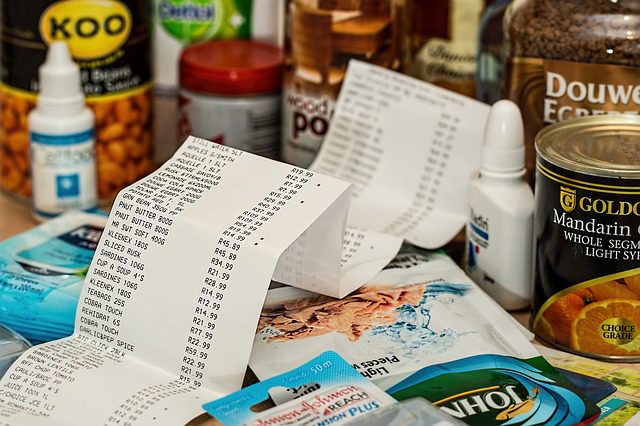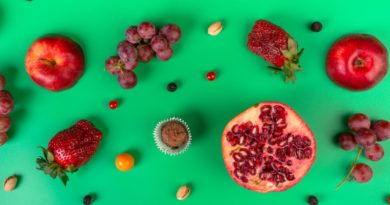Eating Healthy on a Budget Isn’t Truly That Difficult
Times are tough right now–we all know it. Money is tight and the rate of unemployment seems to keep growing (as are American’s waists). You’re starting to wonder how in the world you can afford to eat healthy when it seems “healthy foods” are so much more expensive. Eating healthy on a budget may seem difficult. But you may find yourself considering paying several dollars for a source of lean protein or hitting up the $0.99 menu at Wendy’s instead. The truth of the matter is, you don’t have to spend a lot on healthy alternatives, you just have to be smart about what you are buying.
The biggest factor in keeping money in your pocket is to STOP EATING OUT. Prepare all your own meals. This article will show you different ways to make your money work for you and keep you healthy and fit. Let’s dive into how you can start eating healthy on a budget.

Disclaimer: This article is for informational purposes only and is not meant to treat or diagnose any condition. It is recommended that you speak with your doctor before starting any exercise program, changing your daily nutrition, or adding any supplements to your regimen.
Table of contents
Where to Shop When Eating Healthy on a Budget
Where you shop really doesn’t matter as long as you have a grocery list of what you need and are sticking to what is on your list. Every grocery store has the usual name brand items as well as the generic brands. Obviously, the generics are much better on your wallet and offer the same nutritional value (most of the time). I’ll touch more on the specifics of what to purchase a little later in this article.
Related Article: Strength & Conditioning on a Budget
If you are planning on buying products in bulk, try and find locations that are wholesalers such as Costco, BJ’s, Sam’s Club, etc. These places allow you to purchase a large quantity of an item and are able to discount it for the most part cheaper than you can buy at a normal grocery store. This is key for eating healthy on a budget. Stay clear of convenience stores as they are generally more expensive than grocery stores on just about everything you find in them.
What is the Cheapest Way to Eat Healthy?

Eating healthy on a budget requires some planning and strategic choices. Here are some tips to help you eat healthily without breaking the bank:
- Plan your meals: Plan your meals for the week before you go shopping. This can help you create a shopping list with only the necessary items, reducing the likelihood of impulse purchases.
- Buy in bulk: Purchase non-perishable items in bulk, such as rice, beans, pasta, and oats when eating healthy on a budget. Buying in larger quantities often costs less per unit, saving you money in the long run.
- Choose seasonal and local produce: Seasonal fruits and vegetables are often more affordable and fresher. Local produce can also be cheaper, as it hasn’t incurred the transportation costs associated with long-distance travel.
- Frozen fruits and vegetables: While fresh produce is excellent, frozen fruits and vegetables are a budget-friendly alternative. They have a longer shelf life, and the nutritional content is generally preserved during the freezing process.
- Generic brands: Opt for generic or store brands instead of name brands when eating healthy on a budget. Often, these products are of similar quality but come at a lower cost.
- Compare prices: Be a smart shopper and compare prices per unit or weight. Sometimes, buying a larger package is more cost-effective, but not always.
- Limit processed and pre-packaged foods: Whole foods are generally cheaper and healthier than processed and pre-packaged items. These items also often have a longer shelf life.
- Cook in batches: Prepare larger quantities of meals and freeze portions for later. This helps you avoid the temptation of ordering takeout and ensures you always have a healthy option available.
- Utilize inexpensive protein sources: Beans, lentils, eggs, and canned fish (such as tuna or salmon) are affordable sources of protein when eating healthy on a budget. They can be versatile and incorporated into various dishes.
- Shop sales and use coupons: Keep an eye on sales and discounts for your favorite healthy items. Additionally, use coupons to save money on groceries.
- Minimize waste: Use leftovers creatively to avoid food waste. Consider repurposing them into new meals or incorporating them into the next day’s lunch.
- Drink water: Water is the healthiest and most budget-friendly beverage. Limiting sugary drinks and opting for water can save both your health and your wallet.
Remember, a healthy diet doesn’t have to be expensive. By making thoughtful choices and planning ahead, you can focus on eating healthy on a budget.
How to Shop When Eating Healthy on a Budget

We all know that in “inner” area of the grocery store is full of all the junk and stuff you should stay away from. Therefore make the outer perimeter your main focus when you arrive. This is where you will find your grains, lean protein sources, produce, and dairy. If you have items that are on your list that are on the inside aisles of the store look above and below the name brands and you will find the generic versions which are less expensive. Most of the time you will find the name brands eye-level to entice you into purchasing them. This is another key takeaway when eating healthy on a diet.
Related Article: 8 Tips to Make Smarter Buying Decisions at the Grocery Store
Buy everything you can in bulk as long as you will be able to use it before it spoils or goes bad. If you are purchasing protein sources that can be frozen this makes it easy to keep food good for when you want to use it.
Look for sale items and take advantage of coupon savings. I understand that it might take a few minutes out of your day to look through ads and cut out coupons for items that you regularly use throughout the week. The time spent cutting out coupons will save you a lot of money in the long run.
Try and buy produce in season is important when eating healthy on a budget. When you start purchasing out of season produce is when things start to get pricey. You can always purchase the frozen version as that will obviously keep longer than the fresh version. If you decide to go with the frozen version just make sure that it doesn’t contain any other ingredients like sugar/syrup/creams/etc.
Nutritionally, frozen/fresh produce is the same so pick whatever is the least expensive (you might have to go back and forth from the produce section to the frozen foods to check prices). The best choice when it comes to produce is organic. Yes, organic versions are normally more expensive but if you check the prices you might be surprised to see that some of the prices are not far off and you can go with the organic option and not break your bank.
What Should You Buy?

Some of these options were mentioned above so let’s dig a little deeper into how you can get more bang out of your buck when eating healthy on a budget and trying to make healthy food choices. First things first though… NEVER SHOP ON AN EMPTY STOMACH! It doesn’t matter what’s on your grocery list, if you are hungry, you will buy whatever looks good.
- Look for lean meats that are on sale (normally every grocery store has something on sale every week)
- Buy your protein sources in bulk when possible and freeze anything extra you aren’t going to be eating in the next day or two
- Buy the 90% lean meat to save yourself some money and when cooking just be sure to drain all the extra fat after cooking
- Don’t buy the ready-to-cook meats as they are expensive, instead buy your lean protein source and skin/season it yourself
- Eggs are a fairly inexpensive protein source and can be prepared in many different ways
- Purchase fresh fish as a lean protein source or utilize the canned version (make sure it is canned in water)
- If ground meat is not on sale look for the leaner version–that being ground turkey
- Purchase brown rice rather than white rice
- Whole wheat English muffins are a great replacement for bread and can be used to make many different meals
- Whole wheat tortillas can also be substituted instead of using bread
- Purchase the biggest container of plain oatmeal you can find and make your own rather than buying the expensive flavored versions (make yours with something like honey, nuts, fruit, cinnamon)
- Stop buying soda and start drinking more water


*Disclosure: This article may contain affiliate links or ads, which means we earn a small commission at no extra cost to you if you make a purchase through these links. These commissions help support the operation and maintenance of our website, allowing us to continue producing free valuable content. Your support is genuinely appreciated, whether you choose to use our links or not. Thank you for being a part of our community and enjoying our content.
PLEASE CONSIDER SHARING THIS ON YOUR SOCIAL MEDIA TO HELP OTHERS LEARN MORE ABOUT THIS TOPIC.





